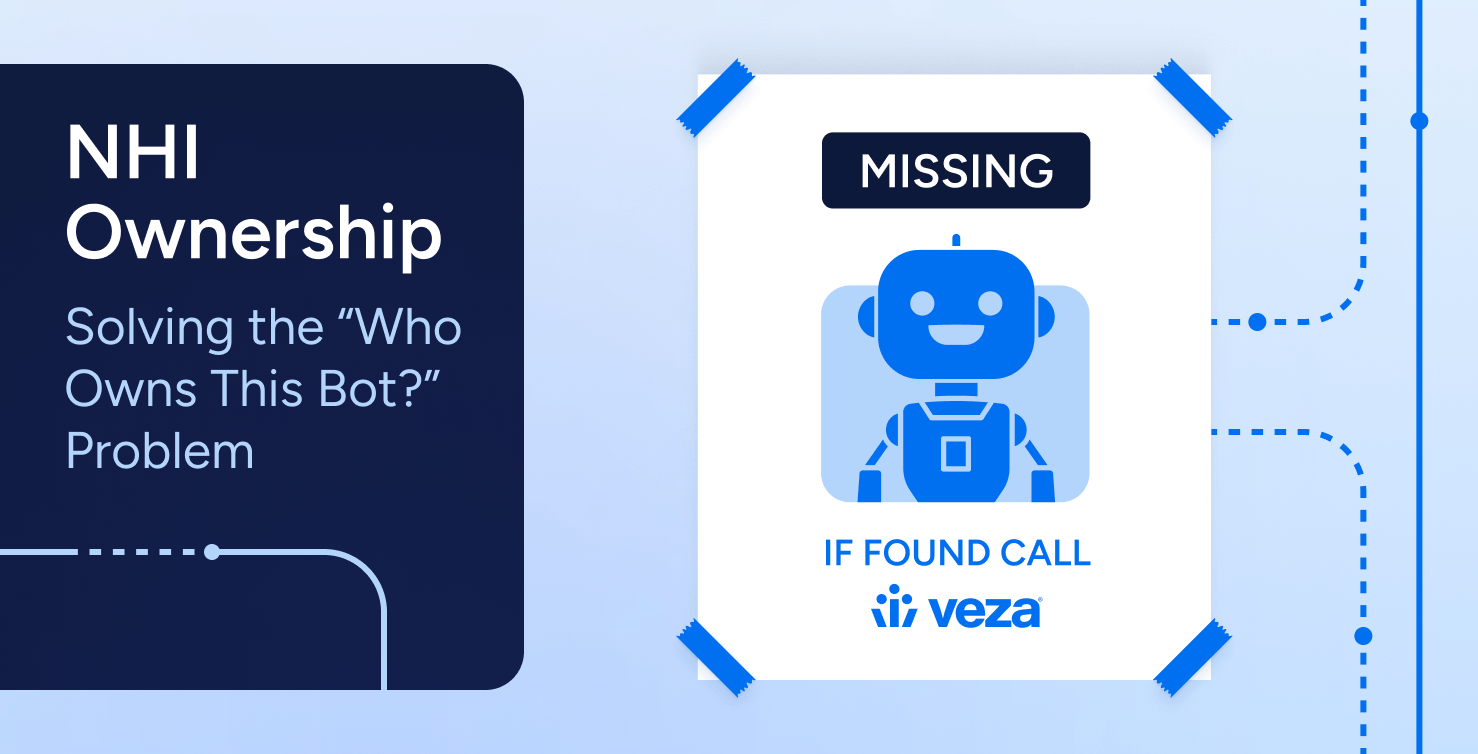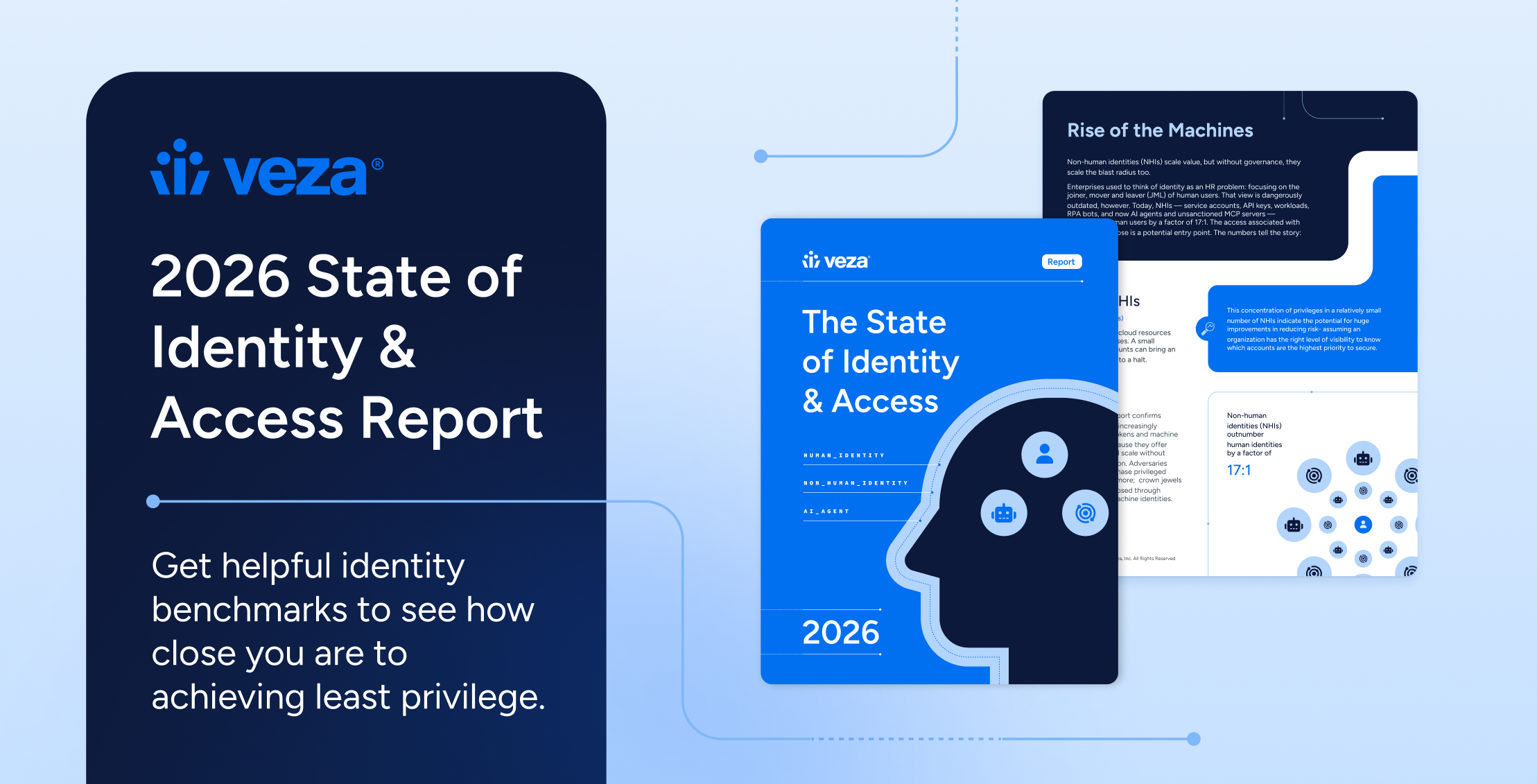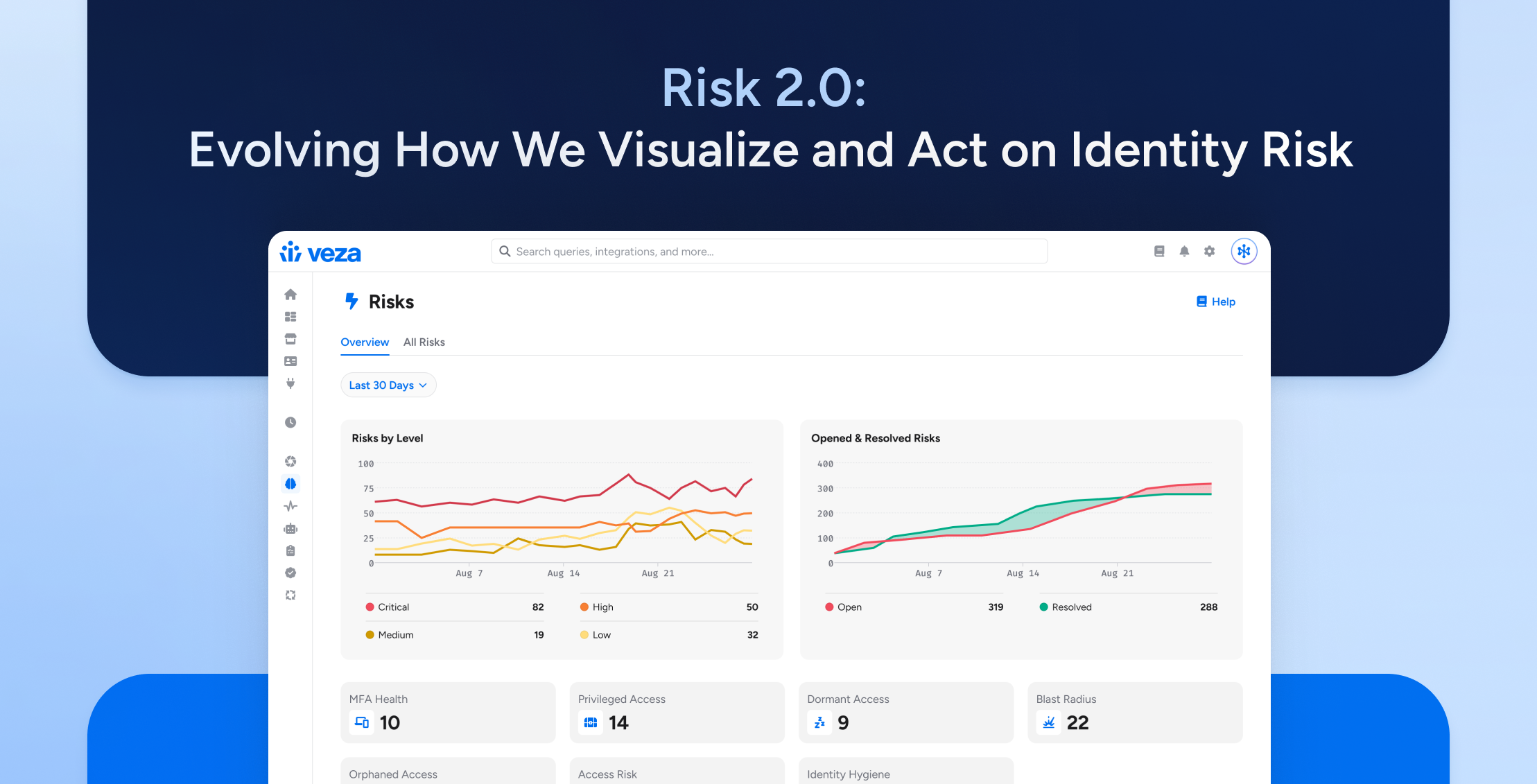
NHI ownership is measurable risk reduction. When non-human identities like service accounts, API keys, bots, and enterprise applications have a named human owner and operate with least privilege, three outcomes follow: breach paths shrink, audits get simpler, and delivery speed holds. With a clear map of effective permissions in the Access Graph, teams prove who can do what to which data, prioritize real blast radius with Access Intelligence, and keep ownership current across pipelines, automations, and services. The business result is practical: stronger compliance and audit readiness, lower loss exposure for cyber insurance, and higher confidence in operational resilience.
To ground this in reality, here are six high-impact places where NHI ownership pays off:
- Unintended prod cloud access
Service principals and workload identities with rights in production get a named owner and least-privilege scope before they become an incident. - SaaS tokens with broad scopes
Marketplace apps and internal integrations map to accountable owners, and scopes are trimmed to what the app actually needs. - CI build bots that can ship to prod
Pipeline identities are owned by the team that runs them, with deploy and environment rights reviewed first. - Data service accounts touching PII
Warehouse, lake, and database NHIs are tied to data owners, and write/delete on sensitive tables is justified or removed. - Secrets without owners or expiry
Keys and API tokens require owner metadata at creation, include expiry, and are rotated on schedule. - IdP app registrations no one claims
Entra/Okta app registrations and SCIM clients are treated as NHIs, assigned to real owners, and reviewed for admin-grant paths.
NHI Risk: A breach that starts quietly
It can start with an ownerless service account. A pipeline key that outlives the team that created it. A SaaS connector that keeps working long after the project ends. When that secret leaks, nothing screams until the attack is underway or long completed, and the data has already moved. NHI ownership is the missing control that stops quiet mistakes from becoming public incidents.
Non-human identities are unglamorous and dangerous. If a bot can touch data, a human must be accountable. Full stop.
Why NHI ownership is hard in the real world
- Volume and drift:
Pipelines, microservices, and SaaS connectors create NHIs faster than they’re retired. Projects end, but identities and permissions drift on, leaving stale keys and over-broad roles. - Fragmented permissions:
Every system speaks a different authorization model. Roles, scopes, and policies don’t translate cleanly, so teams can’t see true blast radius across environments. - Shadow automation:
Tokens and keys are minted outside Security’s line of sight. They lack owner metadata, expiry, or rotation, and no one knows when they start touching sensitive data. - Ownership ambiguity:
Tickets stall because there’s no accountable human. Work routes to mailboxes instead of named owners, and risk lingers.
You cannot govern what you cannot assign to a responsible person.
What good NHI ownership looks like
- Every NHI has a named human owner and a backup
Individuals or groups. Real people. Real teams. Recorded in the same place you record the identity. - Reviews are scoped to impact
You review NHIs that can move or mutate sensitive data first. Read-only and non-prod identities are de-prioritized unless they can escalate. - Hygiene is automated
Rotation, expiry, and right-sizing run on schedules. New NHIs cannot be created without owner metadata. Exceptions have owners, reasons, and sunset dates. - Ownership follows the permissions
The owner you assign to an NHI stays attached as that identity gains, loses, or moves access. When effective permissions change, the recorded owner and backup are the ones notified and accountable.
What this means in practice:
- If a role change grants the NHI write on a prod database, the same owner is alerted with the new blast radius.
- If a service account is reused in a new namespace or account, the owner rides along so reviews and tickets route to the right team.
- If an identity is cloned or a key is rotated, the ownership metadata is copied forward so no “orphan by duplication.”
- If an NHI assumes roles or federates, the derived permissions still point back to that owner.
How Veza makes NHI ownership obvious
- Turn sprawl into a map
Veza assembles a single picture of who can take what action on which data. The Access Graph traverses users, groups, roles, scopes, and policies so effective permissions read in plain language and every non-human identity ties back to a human owner. - Resolve identities to impact
Abstract roles become concrete statements such as, “deploy-svc can delete prod object storage X” or “etl-bot can write customer PII table Y.” Those statements drive prioritization so teams work the highest blast radius first. - Map NHIs to owners at scale
Inventory service accounts, keys, secrets, and app registrations; attach a named owner and backup using signals you already have, repo paths, namespaces, tags, CMDB fields, and keep that lifecycle in view with the NHI Security data sheet. - Answer ownership questions in seconds
Ask practical questions and get accountable answers. Which NHIs can mutate production data? Which tokens lack expiry? Which service principals have admin on any prod subscription? By querying the graph with Access Search, results include the recorded owner and route to a person, not a queue. - Keep owners in the loop
When effective permissions change or usage crosses a risky threshold, notify the recorded owner with identity, action, resource, and a recommended fix, using the workflows outlined in the Activity Monitoring data sheet. - Right-size without breakage
Propose least-privilege changes from observed needs, rotate long-lived secrets on schedule, and capture justified exceptions with owners and sunset dates; when you’re ready to tighten access, apply Privileged Access Assurance and keep before/after evidence from the graph to prove the control actually operated. - Make it auditable
Every remediation carries evidence: the NHI, its owner, the prior and new permissions, and the timestamped event that triggered action. That packet satisfies auditors and insurers and gives leadership measurable proof, not promises.
Your NHI Security Checklist and Rollout
Weeks 1 to 2 — Inventory and classify
Assign a program owner and backup
Acceptance: Names documented in the runbook and visible in the ticket queue.Connect core systems to build the picture in the Access Graph
Systems: cloud, SaaS, data platforms, directories. Use the integrations catalog to confirm coverage and gaps; for homegrown apps and pipelines, plan ingestion via the Open Authorization API (OAA).
Acceptance: First full graph build completes without errors.Enumerate all NHIs across cloud, SaaS, data, and directories
Acceptance: Inventory export includes NHI type, last use, and secret state (key/token age, expiry).Map effective permissions to sensitive data and production systems
Acceptance: For each data-impacting NHI, capture a plain-language statement (e.g., “deploy-svc can write customer PII table”).Tag each NHI as Owned, Orphaned, or Ambiguous
Acceptance: ≥ 95% tagged; remainder tracked in backlog with owners and due dates.
Exit criteria: Clean initial graph build; tagging coverage ≥ 95%; impact statements recorded.
KPIs to start: Ownership coverage (baseline) and data-impacting NHI count (baseline).
Weeks 3 to 4 — Assign ownership and set rules
Auto-assign a human owner and backup using existing signals
Signals: repo paths, namespaces, tags, CMDB fields.
Acceptance: An owner and backup are recorded for every NHI with data-impacting rights.Enforce owner metadata at creation time
Where: CI templates, service onboarding, and app-to-app token creation.
Acceptance: Pipelines and forms reject NHIs without owner fields.Validate assignments before rollout
How: Ask natural-language questions (e.g., “who owns deploy-svc in prod?”) and confirm the returned owner, affected resources, and actions via Access AI.
Acceptance: Spot checks show owner/backup match the product or data domain, with blast radius clearly stated.Define rotation and expiry policies by sensitivity tier
Acceptance: Policy doc published; rules mapped to NHI tags (e.g., prod-data-writer, prod-admin, non-prod).
Exit criteria: Owners and backups set; controls block ownerless NHIs; policies published and visible to app teams.
KPIs to move: Mean time to owner < 24 hours; ownership coverage ≥ 98%.
Weeks 5 to 6 — Review and right-size
Route targeted reviews to the right owners
How: Scope reviews to NHIs with write, delete, or admin on sensitive data using Access Reviews.
Acceptance: Only data-impacting NHIs are in scope; each review goes to the recorded owner (not a shared mailbox).Remove unused roles, expire stale tokens, rotate long-lived keys
Acceptance: Aging thresholds defined (e.g., >90 days unused, >30 days to expiry); remediation backlog opened with owners; “wave 1” closed with before/after permissions captured.Right-size remaining privileges
Acceptance: Proposed changes reflect observed needs; approvals include plain-language blast-radius statements (identity → action → resource); rollbacks documented if anything breaks.Document justified exceptions with expiry dates
Acceptance: Every exception has a ticket, business reason, named owner, and sunset date; renewal requires re-review.
Exit criteria: First review cycle complete; backlog reduced; exceptions documented with owners and end dates.
KPIs to move: Review completion ≥ 95%; data-impacting NHI count trending down from baseline.
Week 7 and beyond — Automate and enforce
Monitor for new data-impacting grants and alert the recorded owner
How: Use the workflows in the Activity Monitoring data sheet.
Acceptance: Alerts include the NHI, action, target resource, prior vs. new effective permissions, and a recommended remediation; owner and backup both notified; alerts deduplicated and rate-limited.Block creation of NHIs without owner metadata
Acceptance: CI templates, service onboarding, and app-to-app token flows reject submissions missing owner and backup; controls tested in staging and production with negative/positive test cases.Keep rotation and expiry on schedule with policy-driven workflows
Acceptance: Auto-tickets open before SLA breach; tickets include owner, NHI, secret age/expiry, and runbook link; closure requires evidence of rotation and updated expiry.Continuously right-size privileges
Acceptance: Proposals reference observed usage (last 30/60/90 days) and list before/after permissions; changes require owner approval and capture rollback steps.Capture evidence for audits and insurers
Acceptance: Each alert, block, or rotation stores an evidence packet: identity, owner, trigger event, action taken, timestamp, and verifier. Quarterly export reviewed with Compliance.
Exit criteria: Alerts are actionable (owner + fix in message), preventive controls block ownerless NHIs, and workflows generate timely tickets with evidence attached.
KPIs to hold or improve: Data-impacting NHI count continues down; key hygiene at 100% expiry coverage and ≥ 95% on-time rotation; alert MTTRespond < 24 hours; false-positive rate < 5%.
Measure every week
- Ownership coverage
Metric: NHIs with named owner and backup ÷ total NHIs
Target: ≥ 98% - Data-impacting NHI count
Metric: NHIs with write, delete, or admin on sensitive data
Target: Down quarter over quarter - Mean time to owner (MTTO)
Metric: Creation → owner assignment
Target: < 24 hours - Review completion
Metric: On-time rate for scoped NHI reviews
Target: ≥ 95% - Key hygiene
Metrics: Percent of tokens with expiry; keys within rotation SLA
Targets: 100% expiry; ≥ 95% on-time rotation - Evidence completeness
Metric: Remediations with attached graph evidence (identity → action → resource), owner attestation, and timestamp
Target: 100%
Notes:
Stretch goals
- Natural-language owner verification in day-to-day ops
- Blocklist patterns for risky NHI creation in CI templates
- Quarterly tabletop using two orphaned-NHI scenarios
Avoid these pitfalls
- Treating all NHIs as equal, prioritize those that can move or mutate sensitive data.
- Assigning ownership to “Security” as Security sets policy; app and data owners own the risk.
- Doing a one-time cleanup without monitoring and enforcement, as it allows drift to return.
Quick answers for practitioners
What is NHI ownership
Treat every bot, token, service principal, and integration as an accountable identity with a named human owner and backup, then prove it in an evidence model your execs and auditors recognize. For the category framing that’s winning mindshare, see Gartner’s take on Identity Visibility & Intelligence Platforms (IVIP), the umbrella under which NHI ownership becomes a measurable business control.
How does Veza discover NHIs
Connect cloud, SaaS, data, and directories, then normalize each system’s authorization into one model so the graph can traverse identities → permissions → data impact. The Non-Human Identity Management use case lays out coverage and the specific NHI classes you’ll inventory first.
How do I pick the right owner
Use signals teams already maintain (repo paths, namespaces, tags, CMDB fields), then verify blast radius with precise queries so the owner ties to concrete resources and actions. The VQL primer shows how to express identity → action → resource without guesswork—clean enough for reviews, exact enough for auditors.
How do I keep ownership fresh
Move from one-time cleanup to continuous governance: enforce owner metadata at creation, watch for permission changes and risky usage, notify the recorded owner with context, and attach before/after evidence to every change. That’s the cadence ISPM formalizes; the Identity Security Posture Management (ISPM) page, maps how continuous scoring and policy-driven enforcement keep NHI ownership current.
The takeaway
NHI ownership is not a cleanup sprint. It is how you run. Give every bot, token, and service principal a named owner. Let the Access Graph serve as the source of truth for effective permissions. Route changes through policy, not ad hoc tickets.
Do that and the noise drops. Breach paths shrink. Audits become evidence you can hand to a board. Secrets rotate on schedule without drama. The program starts simple, inventory and owners, then right-size what matters. Over time it becomes muscle memory, alerts go to accountable humans, exceptions expire by design, and trend lines move the right way quarter after quarter.
Treat NHI ownership as governance you can prove. Insurability, resilience, and delivery speed follow.
What to do next
Set the foundation
Give teams a plain-English primer with What are Non-Human Identities so “NHI ownership” means the same thing across app, data, and security.
Frame the risk and signal
Show leadership why visibility matters with NHI Security: Non-Human Identity Visibility and connect ownership to real data impact.
See it in practice
Join the session on patterns, pitfalls, and playbooks in NHI Ownership: Implications of Agentic AI and leave with a rollout you can run.
Apply the model in your environment
Turn policy into motion with a working map of owners and permissions by requesting a demo.




